The success of everything you do in marketing — all of your planning, your automation, your copywriting — hinges on one moment …
The Ask.
Also known as the call-to-action.
In today’s MarketingExperiments blog post, we’ll share five common call-to-action errors we’ve discovered in our research, with an example experiment result for each one.
These errors were taken from, and you can learn much more in, the video replay of our “Minor Changes, Major Lifts: How headline and call-to-action optimization increased conversion 45%” Web clinic, written by Dr. Flint McGlaughlin, Managing Director and CEO, MECLABS, and Paul Cheney, Editorial Analyst, MECLABS.
“Behind every call-to-action there is a perceived cost for taking that action,” Dr. McGlaughlin said. “By either reducing the perceived cost or increasing the perceived value in the button copy, we can generally observe an improved response.”
(Please note: Some samples have been anonymized to protect Research Partner identity.)
Error #1: A call-to-action without implied value
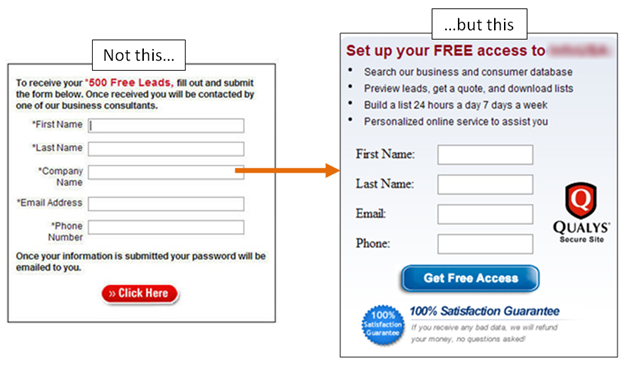
The result: 201% increase in conversions
The value to the customer for taking the requested action in the form on the left is … a sales call?
However, the value for taking action in the form on the right is free access to search a business and consumer database.
Which has more value to you?
Error #2: A call-to-action among several others
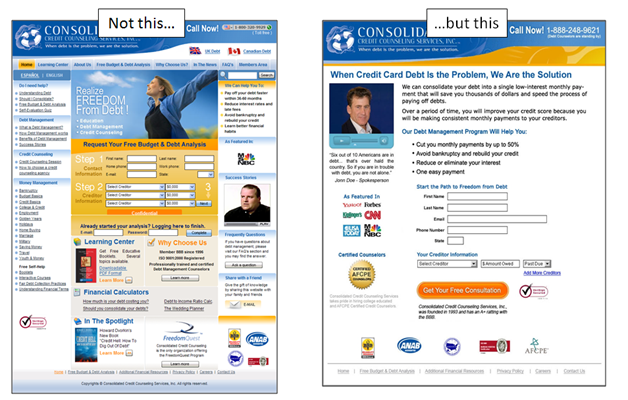
The result: 357% increase in monthly clients
The main call-to-action for the page on the left is … somewhere there.
The main call-to-action for the page on the right is “Get Your Free Consultation.”
The modern customer is extremely impatient, and has an attention span that can barely get through 140 characters before moving on to the next thing. Don’t allow unsupervised thinking. Make it clear how you’d like the customer to act.
Error #3: Evenly weighted calls-to-action
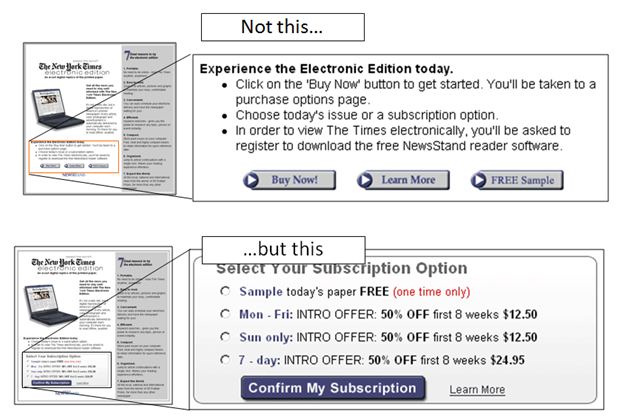
The result: 64% increase in conversion
Sure, this isn’t quite as bad as error #2, but again, don’t allow unsupervised thinking. Make it clear what you’d like the potential customer to do.
Error #4: A call-to-action “above the fold”
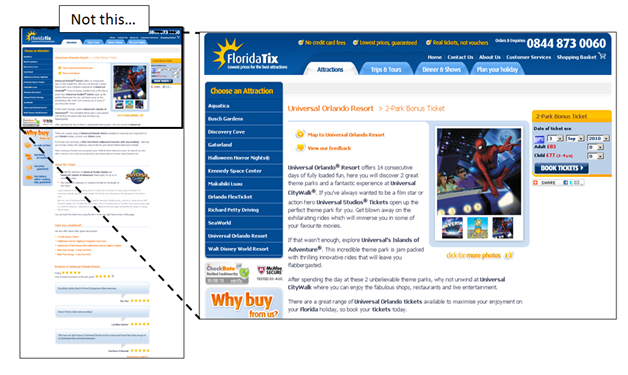
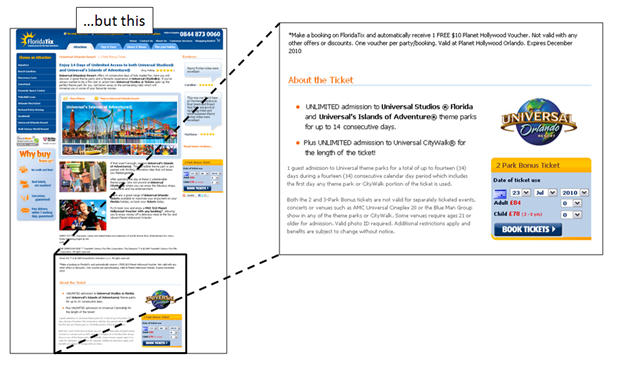
The result: 20% increase in conversion
I’m sure you’ve heard it before. The call-to-action must be above the fold. This is a so-called “best practice” that we highly recommend you test on your own pages.
If you just rotely put the call-to-action above the fold, you may be making “the ask” before your potential customer sees the value in why they should act. Or, sometimes, before they even know what you’re asking.
A long, ugly page with a call-to-action “buried” below the fold can outperform this so-called “best practice.”
Error #5: A call-to-action that asks for too much
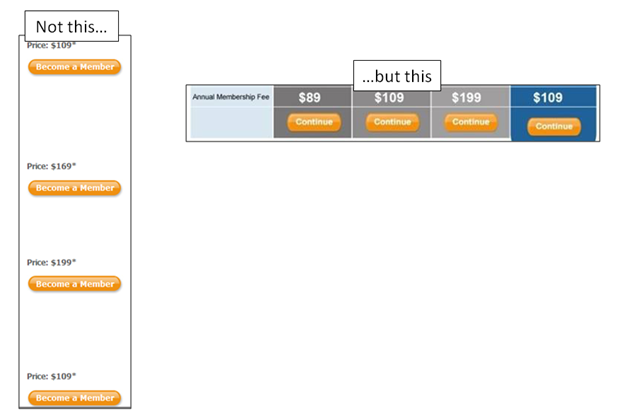
The result: 81% increase in clickthrough
Much like error #4, you have to understand the customer’s thought sequence. Asking for too much too soon can seriously hurt conversion.
Related Resources:
Web clinic replay—“Minor Changes, Major Lifts: How headline and call-to-action optimization increased conversion 45%”
Common Landing Page Mistakes: Too simple of a landing page for a complex sale
Nonprofit Marketing: How a long, ugly page generated 274% more revenue




I really liked the 1st and the 4th one. There shall be done more tests by the digital marketers. I have tested in many landing pages that one call to action above the fold and one below works well.
Thank you for this brief, but value filled article. Your visuals bring it all to life.
#4 was a surprise, although it’s so true that you need to build up trust and credibility with your reader before asking.
I’m off now to watch the video!
Smiles,
Betty
Having the call-to-action above the fold really depends on what you’re offering. Some things need more copy than other. Overall, great post!
I just want to marry Marketing Experiments.
Nice round-up of CTAs and the common errors we see in them. I think the key to a successful and effective Call to Action, and indeed any element of online marketing, is clarity and focus. Make it clear what the reaction will be once the action is taken, and focus the user on carrying out that desired action, through effective copy, user-centred design, and testing.